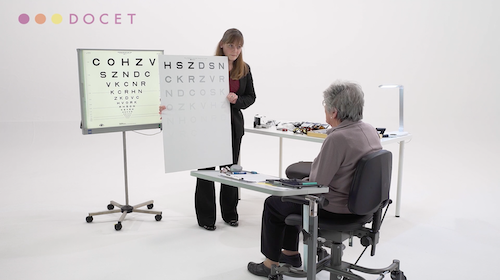General
![]()
![]()
Domains: Clinical practice, Professionalism
No CPD Points

The final module of Docet’s Ageing Eye Series is split into two parts. The first part covers all aspects of a low vision assessment in elderly patients in community practice. In the second part you will follow a panel of experts discussing four patient scenarios focusing on optical need, depression, field loss and mobility issues followed by suggested management plans for each patient.
Part one contains the following:
- Introduction to our four patients
- Adapted clinical assessment for the visually impaired patient
- History and symptoms-taking for the visually impaired patient
- How to decide upon magnification requirements,
- Use of specialist charts and how to record results
- Nature and properties of a range of optical, non-optical and electronic low-vision aids.
To find out how our panel of experts reviews our four patients, along with management plans, please go to Ageing Eye: Visual Impairment, Part 2.
First published: January 2018
Last reviewed: April 2022